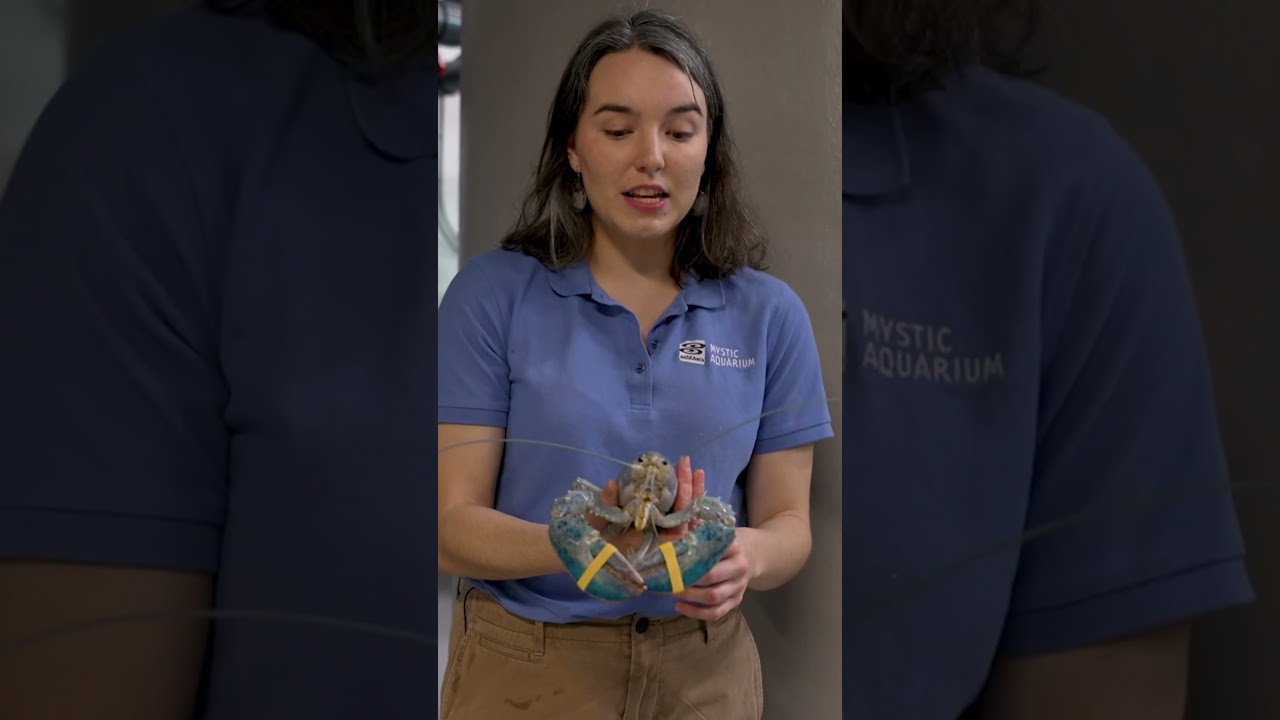– Discover the rarity and reasons behind the striking color of blue lobsters
– Learn how blue lobsters have become a symbol of fascination and conservation
– Explore the ecological role and the critical issues facing lobster populations
Have you ever glimpsed something so startling in nature that it stops you dead in your tracks? Prepare to be dazzled by the magnificent blue lobster, an oceanic treasure that seems plucked right out of a fairy tale. Stick with me as we dive into a world where biology paints in hues of improbable beauty, and conservation becomes a narrative as compelling as any mythology.
Lobsters are usually decked in a modest armor of muddy browns and greens – perfect for blending into the rocky seafloor. Yet nature, in her whimsical artistry, occasionally throws a striking curveball – the blue lobster. So, what lavish trickery does Mother Nature employ to craft such an otherworldly creature?
At the heart of this blue mystery lies a genetic anomaly. Most lobsters brandish a pigment called astaxanthin, which typically combines with proteins to form a dark, reddish-brown coloring. But in these sapphire specimens, a genetic variation causes excess production of a particular protein, cradling the astaxanthin in such a way that reflects and refracts light to beam out a glorious blue. Imagine pulling one of these rarified beauties from the depths; your hands unwittingly brushed with living sapphire.
The odds? About one in two million. That’s right, blue lobsters are flaunting their rarity, catapulting themselves into the limelight as enigmas of the deep. It makes one ponder the sheer scale of the ocean’s expanse, in which such a creature is less common than a four-leaf clover in an endless meadow.
This spectacle becomes all the more mesmerizing when you learn that this quirk of nature isn’t just for show. Lobsters are formidable scavengers, with blue lobsters performing the same ecological waltz as their earth-toned kin. Their role in the marine food web is critical; they help maintain the balance by consuming dead animals and plant matter. They’re like the cleanup crew that keeps the ocean floor immaculate, ensuring energy and nutrients are cycled back into the ecosystem.
But lest we think our cobalt friends are just cruising the ocean floor without a care, it’s crucial to know that lobsters face their share of perils and challenges. Overfishing, habitat loss, and climate change cast long shadows over their underwater world. These issues are not isolated woes; they ripple outward, affecting the complex web of marine life. Blue lobsters, in their scarcity, become inadvertent mascots for the cause of ocean conservation, a reminder of the need to safeguard the biodiversity of our seas.
As you’ve likely surmised, the path of a lobster from the ocean floor to our dinner plates is fraught with controversy and concern. Fishing practices have evolved, but sustainability is a dance human and nature must perform in unison. This march toward a future where lobster populations thrive demands that we continually innovate and respect the delicate balances of our marine ecosystems.
Now, should a fisher be graced with the serendipitous catch of a blue lobster, the event often garners media attention. These lucky individuals face a choice – to send the lobster to the market or recognize the crustacean’s rarity and opt for conservation, sometimes donating the creature to an aquarium where its singular beauty can inspire awe and educate the public. The journey of a blue lobster from the ocean’s embrace to an ambassador for marine wonders is an odyssey worthy of its saga.
Whole-heartedly, the sight of a blue lobster behind the glass of an aquarium stirs something profound. Children and adults alike are invariably drawn to their tanks, faces lit with wonder. Just like that, the peculiarities of genetics cross paths with human fascination, and a spectacle of nature becomes an invitation to care more deeply about the world beneath the waves.
Yet, as we marvel at these blue beauties, remember that their less glamorous relatives are no less worthy of our admiration and protection. The regular brown lobster is just as critical to the ocean’s health and is impressive in its resilience and ecological function.
Let’s talk inspiration and action as we lift our gaze from the lobster tank. Think of our daily small choices, like choosing seafood from sustainable sources or reducing plastic use, to curtail the ocean’s woes. Each gesture, seemingly trivial in isolation, weaves together to form a safety net for the creatures of the deep.
Returning to the surface, we close this undersea chapter enriched with an appreciation for the extraordinary encounters that lurk in hidden corners of our planet. Blue lobsters, while inherently awe-inspiring, are but ambassadors, leading us into a deeper narrative of ecological interconnection and conservation. Their rarity should serve not only as a cause for celebration but also as a clarion call to safeguard the wondrous biodiversity of our oceans.
And to you, dear reader, may your next stroll along the shore or dip into the wonders of the aquatic realm be touched by the knowledge that out there, beneath the waves, nature’s palette is broad, and her stories are waiting. With each tide and moonrise, may we find the resolve to ensure that the mystery and splendor of the blue lobster and all it represents are not consigned to the realm of myth but thrive in the swirling dance of life beneath the sea.
So next time you come across a fork in your path, imagine it as a lobster’s path – the option to blend in or stand out with blue flair. With the world as your ocean, may you wield your influence with the grace of a lobster’s antennae, feeling the best course for yourself and the environment you cherish. After all, isn’t life just that much more dazzling when we embrace the full spectrum of its colors – even, especially when it’s blue like a lobster?
*****
Source Description

